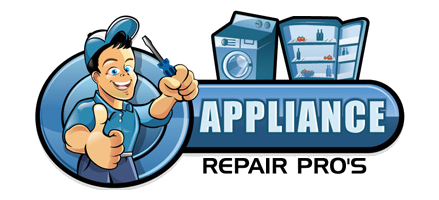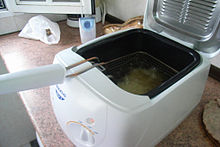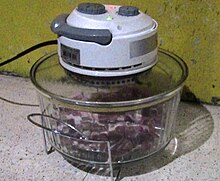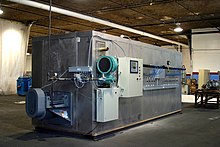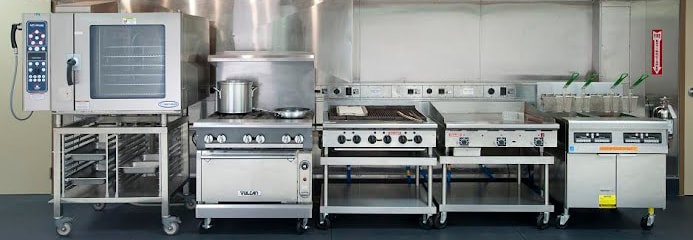
Commercial Restaurant Equipment Repair & Service (772) 501-9870
In the food industry, your restaurant is only as good as the last meal you served. That’s why it’s so important for your commercial cooking equipment to always bring its ‘A’ game. When your restaurant equipment consistently underperforms, so do the meals you prepare for your customers.
We know how crucial well-performing restaurant equipment is to your business’s success, so we provide all the reliable repair, replacement and maintenance services your kitchen needs. As a member in fine standing with the Commercial Food Equipment Service Association (CFESA), we receive the latest industry news and developments necessary to handle any cooking equipment challenges.
When your restaurant’s cooking equipment breaks down, it can be a disaster. Whether a broken dishwasher leaves you with a never-ending stack of dishes, or a defective oven produces burnt or undercooked food, failing kitchen appliances are never good for business.
ur factory trained technicians are experienced with all leading brands of equipment and have experience in commercial kitchens of all types and sizes. We provide new installations, repairs and maintenance for the following products:
– Pizza ovens
– Combi-ovens
– Pressure and open fryers
– Coffee machines
– Toasters
– Holding cabinets and food warmers
– Convection ovens
– Kettles, steamers and smokers
– Disposals
– Dish machines
– Proofers
– Exhaust fans and hoods
24/7 Emergency Commercial Restaurant Equipment Repair Service
Call us now and get your Commercial Restaurant Equipment Repair & Service issue resolved
(772) 501-9870

Gas Stove
A gas stove is a stove that is fuelled by combustible gas such as syngas, natural gas, propane, butane, liquefied petroleum gas or other flammable gas. Before the advent of gas, cooking stoves relied on solid fuels such as coal or wood. The first gas stoves were developed in the 1820s and a gas stove factory was established in England in 1836. This new cooking technology had the advantage of being easily adjustable and could be turned off when not in use. The gas stove, however, did not become a commercial success until the 1880s, by which time supplies of piped gas were available in cities and large towns in Britain. The stoves became widespread on the European Continent and in the United States in the early 20th century.
Gas stoves became more wieldy when the oven was integrated into the base and the size was reduced to better fit in with the rest of the kitchen furniture. By the 1910s, producers started to enamel their gas stoves for easier cleaning. Ignition of the gas was originally by match and this was followed by the more convenient pilot light. This had the disadvantage of continually consuming gas. The oven still needed to be lit by match and accidentally turning on the gas without igniting it could lead to an explosion. To prevent these types of accidents, oven manufacturers developed and installed a safety valve called a flame failure device for gas hobs (cooktops) and ovens. Most modern gas stoves have electronic ignition, automatic timers for the oven and extractor hoods to remove fumes.
Deep fryer
A deep fryer is a kitchen appliance used for deep frying. Deep frying is a method of cooking by submerging food into oil at high heat, typically between temperatures of 350 °F and 375 °F (175 °C to 190 °C).[1]
While commonly used in commercial kitchens, household models are available and have become increasingly prevalent.
Deep frying has become well known in the United States, from frying sticks of butter to Twinkies, but the method can be traced back to Roman times.[2]
The modern commercial fryer has improved energy efficiency, resulting from better heat transfer systems. Commercial fryers with infrared heating or convection heating are efficient, but often expensive. Infrared heating uses a radiant heat transfer process and convection heating operates through air circulating, while standard fryers utilize hot combustion gases.[5] The most common fryer models are electric and gas fryers.
Electric restaurant fryers are popular in counter top models, because of their mobility and easy installation. They lose less heat than gas fryers, because their heating elements are immersed in the oil and have a faster temperature recovery time between frying cycles.[6] Gas fryers heat up more quickly and to a higher cooking temperature than electric fryers. They can be powered by either natural gas or propane, both of which are generally less expensive energy sources than electricity. This makes gas power especially popular in floor model fryers.[6] Commercial fryers are generally available in mild steel or stainless steel. Stainless steel is less likely to corrode or stain than mild steel. Mild steel also expands under heat, which may damage the welds over time. Because of this, stainless steel fryers often come with a much longer warranty than mild steel fryers.
Some commercial fryers have a "cold zone" at the bottom of the fry pot. This is where food particles, such as breading, batter or broken off pieces of food, sink to, while the lower temperature keeps them from burning and tainting the oil.[6] A tube-style fry pot has a large cold zone because the tubes are slightly above the bottom of the vat, leaving generous space for cooler oil and crumbs. This is particularly useful for cooking heavily breaded foods (such as a blooming onion). A tube-style fry pot is more difficult to clean than an open fry pot, but the tubes allow easy access to the heat source. Tube fryers are often less expensive than their open fry pot counterparts.
Open fry pots have an external heat source, which makes them easier to clean and affords better access to the oil, but they generally offer a smaller cold zone, so food particles could pollute the flavor of the oil.[7] However, these fryers work very well for lightly breaded foods. Flat-bottomed restaurant fryers (another type of open fry pot fryer) can also be difficult to clean and have no cold zone, but they are highly effective for frying dough. Flat-bottom fryer pots may also be used with a batter trapping insert that keeps loose batter from quickly scorching on the bottom where the heat is applied normally. A batter trap can also help keep loose batter from being stirred up in the oil and adhering to subsequent batches of food in order to make foods taste better and extend the cooking oil's usability.[6]
Some domestic fryers incorporate an angled motorized rotary basket that circulates its contents through the hot oil. This design reduces the amount of oil required to roughly half compared to a more traditionally designed fryer. Domestic fryers are generally much smaller than their commercial counterparts and typically have a capacity of two to four liters.
Temperature controls[edit]
Temperature controls for deep fryers can be implemented, but are uncommon. Without them the deep fryer needs to be watched consistently to ensure safety.[8] There sometimes are "computerized temperature controls" in fryers on the market today, especially in commercial fryers.[9] In fact, some modern fryers have an automatic shutoff control, just in case the temperature gets to high, which adds another level of sophistication and safety.[9] It is a good idea to use a separate or external thermometer, even if the unit has temperature controls, in case there is a malfunction and to ensure that the internal temperature of the food meets government regulations.[10]
Oil filtration[edit]
An oil filtration system, chemical treatment, or diatomaceous earth powder all help remove tiny food particles that are not always visible. Using these systems doubles the life of the oil.[11] Oil filtration systems can sometimes be purchased as an enclosed part of the fryer to avoid involving employees in the somewhat dangerous process of filtering the oil with an exterior system. Many restaurants use a portable oil filtration system to transport waste oil to a disposal area. However, even old oil is not completely useless. There are ways (involving other chemicals and machinery) to "recycle" old oil as biodiesel that can power diesel vehicles. Bio-diesel increases energy security[12] resulting in many environmental benefits and even helping decrease greenhouse emissions. Pouring used oil, such as fats and grease, down the drain should be avoided, as this can cause food build up and clogged pipes, restricting the flow of liquids. This often results in costly restoration and cleaning.[13]
Convection oven
A tabletop convection oven cooking pork. For slower cooking, the gridiron here has been reversed to place the meat low and far from the main heat source (at the top of the pot) although near the heat of the glass pot's bottom. Flipping the gridiron would raise the meat closer to the main heat source.
A convection oven (also known as a fan-assisted oven or simply a fan oven) is an oven that has fans to circulate air around food, using the convection mechanism to cook food faster than a conventional oven.[1] Convection ovens are also used for non-food, industrial applications.
In common usage, the word convection means heat transfer via fluid motion due to temperature differences, and by that definition its use in the term "convection oven" is a misnomer, as convection ovens use fans instead of temperature differences to drive air flow. However, the technical definition of convection does not specify how the liquid motion is driven, so the term does properly apply to these devices.
Culinary convection ovens
Convection ovens distribute heat evenly around the food, removing the blanket of cooler air that surrounds food when it is first placed in an oven and allowing food to cook more evenly in less time and at a lower temperature than in a conventional oven.[2]
History
The first oven with a fan to circulate air was invented in 1914 but never launched commercially.[3]
The first convection oven in wide use was the Maxson Whirlwind Oven, invented in 1945.[4]
